The influence that Italy has had on classic menswear is evident from the soft shoulders of summer sport coats to the Milanese buttonhole on high-end suits. Such is also apparent in terms used by menswear enthusiasts, such as sprezzatura and spezzato, which we’ve both covered in previous posts. Today, we’ll add another Italian S words to our menswear vocabulary, scorpacciata.
What is Scorpacciata?
This term typically refers to a sort of seasonal indulgence. In particular, the celebration of food that happens to be in season at any given time. For example, in Italy, chestnuts are harvested in late October, and around this time, many villages and towns will have a festival or Sagra to celebrate it. The chestnuts are often served roasted in paper cones or ground into flour and turned into cake, studded with pine nuts or crepes filled with sweet ricotta cheese. Everyone will indulge in this great seasonal bounty, and then, with the season, it ends.

Lino displaying sprezzatura – sunglasses, open shirt cuffs, wristbands, ring, sunglasses, cigarette, jacket on the shoulders, sleeve cuffs undone
The same goes for things like olives, grapes, asparagus, or strawberries. They can also be bought out of season in supermarkets, but people will try to avoid this, and there isn’t really the same sense of indulging in the food and digging in with gusto as there is when things are in peak season. But of course, with a few exceptions, we’re not really experts in food.
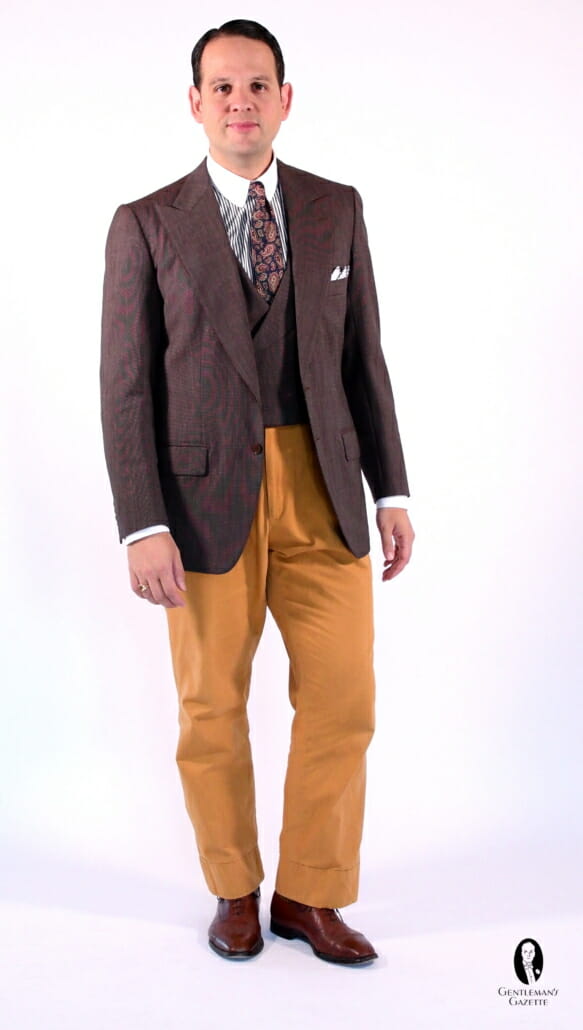
Raphael Employing Colorful Spezzato with a Suit Jacket and Matching Vest with Contrasting Yellow Pants and Brown Oxfords (Madder Silk Tie and Linen Pocket Square from Fort Belvedere)
How does Scorpacciata relate to clothing?
Essentially, scorpacciata in menswear means really savoring different types of clothes that are especially appropriate for a given season. Now, for those who are new to menswear or who don’t really care much about style, the ideal garment is probably going to be the all-season suit.
These suits are typically made of mid-weight worsted wool and can be purchased and then worn all year-long indiscriminately. And for the especially casual, a pair of something like denim jeans might fall into the same category. You can wear them year-round, and they’re versatile enough to pair with almost any casual outfit so you don’t have to think about introducing a lot of variety. However, anyone who is seasonally inclined will relish the chance to wear different things in the winter, spring, summer, and fall seasons.
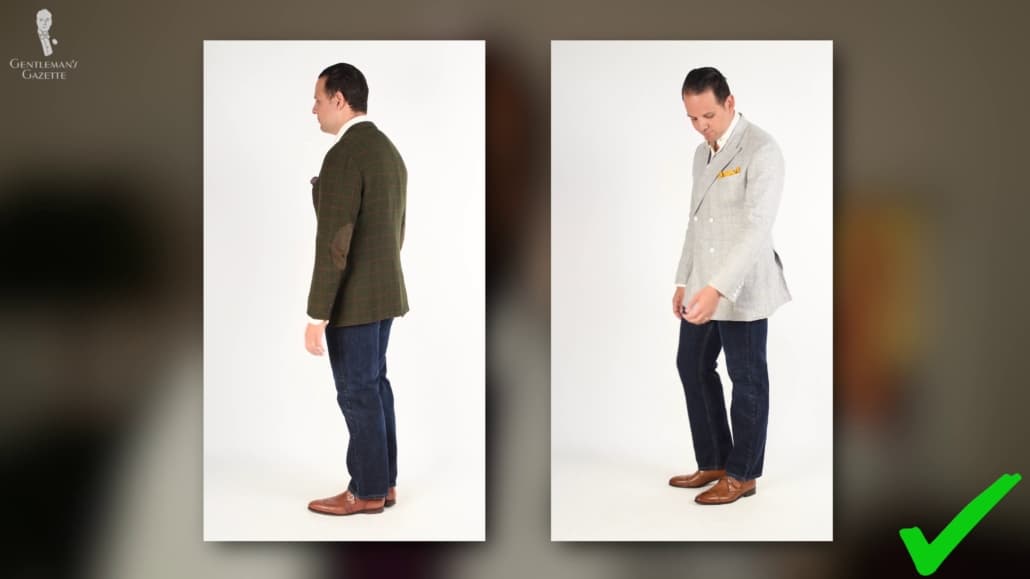
Raphael looking dapper in these sport coats, denim jeans, and dress shoes ensemble.
When the weather starts getting cool, a menswear aficionado might look forward to wearing flannels and tweed sport coats with cashmere ties in the same way that a foodie looks forward to white truffle season.
Conversely, when the weather warms up, he then gets excited about the opportunity to wear linen, loafers, and Panama hats again. This is reflected in his wardrobe as he’ll have collections of clothes for the warm season and the cold season as well as a number of transitional pieces that can be worn equally well when things are in between.

Linens and Panama hats are best for the warmer months.
Main Appeals to Scorpacciata
1. It’s Temporary
Because each season has a start and an end, you find the limited time in which you can wear certain garments well to be more precious and thus you can relish wearing certain garments for a few months at a time and then put them away until next year.
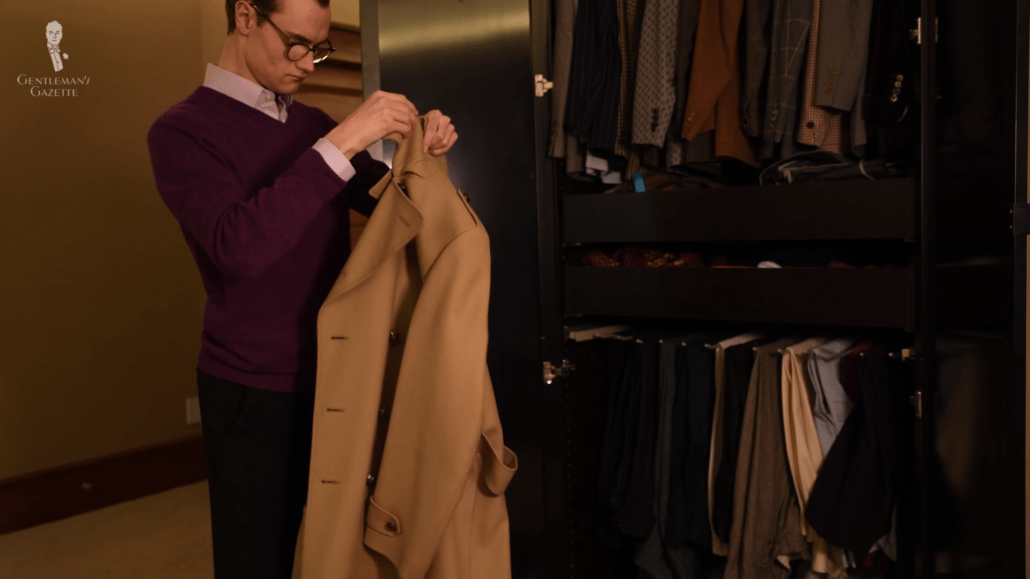
You can store your garments after the season and wear them again next year.
2. Garments Stay In A Cycle
On the opposite side of this coin though, another big appeal to the concept is that even though things are temporary, they’re in a rigid cycle. So, even though you have to appreciate wearing certain garments in a given season, when you put them away, you can look forward to that same season next year as well and get the same sense of renewed pleasure year after year and season after season.
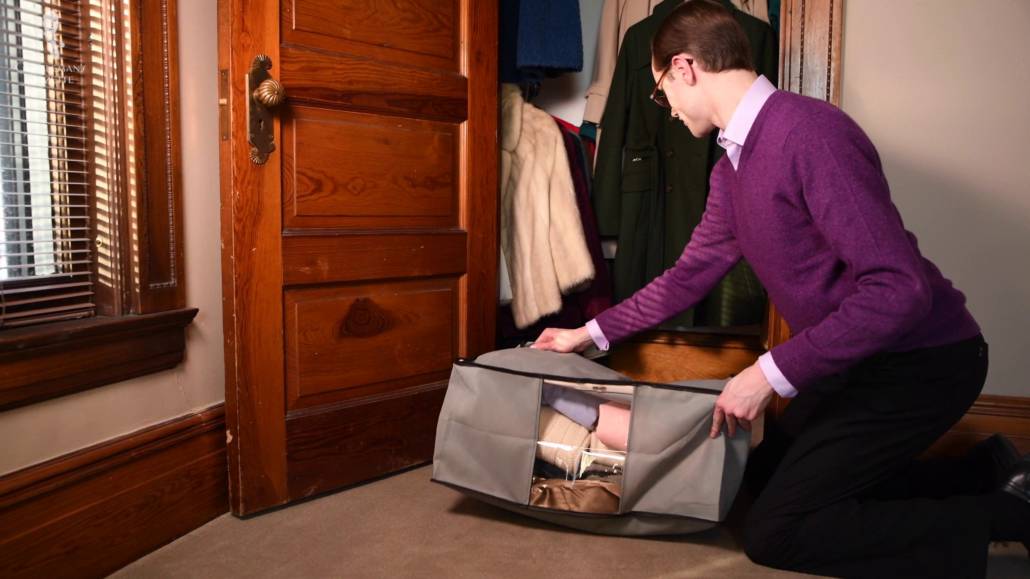
Use cotton garment bags to protect off-season clothing
What Seasonality In Menswear Isn’t
We should point out here that dressing for the season doesn’t mean following fashions in this context. Oftentimes, when we hear the phrase dressing for the season we think of the latest fashions that might have come down runways but this is really something more within the realm of cutting-edge or high-fashion, which is somewhat opposite to the more classically based world of menswear.

Dressing for the season doesn’t always mean following the latest trends, rather, it’s dressing accurately for the season.
So, you can still follow the philosophy of scorpacciata without following what’s in, in any given year. The key is remembering that you’re dressing for any summer or any winter and not being dictated by fashion houses trying to sell you the latest trends.
Seasonality At Different Times of The Year
1. Warm Weather
Dressing for the spring and summer months means a focus on staying cool and having maximum air circulation with your outfits. This would involve things like changing the fabrics you’re going to wear to high twist or tropical wools, frescos, and linens for pants, as well as for jackets. Warm weather typically calls for brighter colors, too. So, you might put more of an emphasis on wearing white like white pants or a white dinner jacket, for example, or go for things like brighter blues and put away your dark navies.
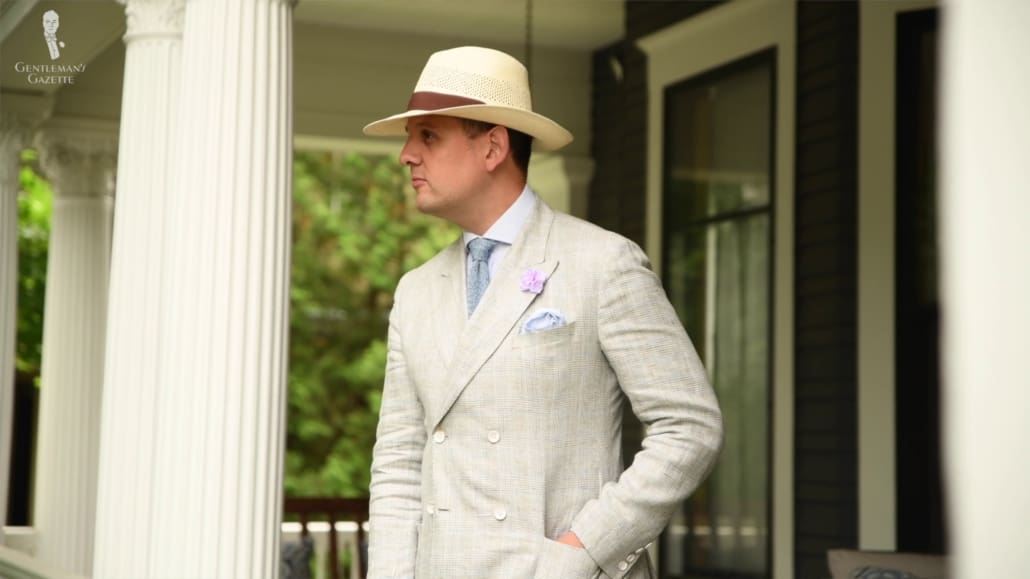
Bright colors, linen sport coats, and Panama hats are perfect for spring and summer months.
It also means being more casual. This is the time to abandon neckwear and open up your shirt collar. Instead of wearing a full suit, you could wear a combination of a sport coat or blazer with odd trousers, and instead of a conventional button-up, you could opt for a polo shirt.
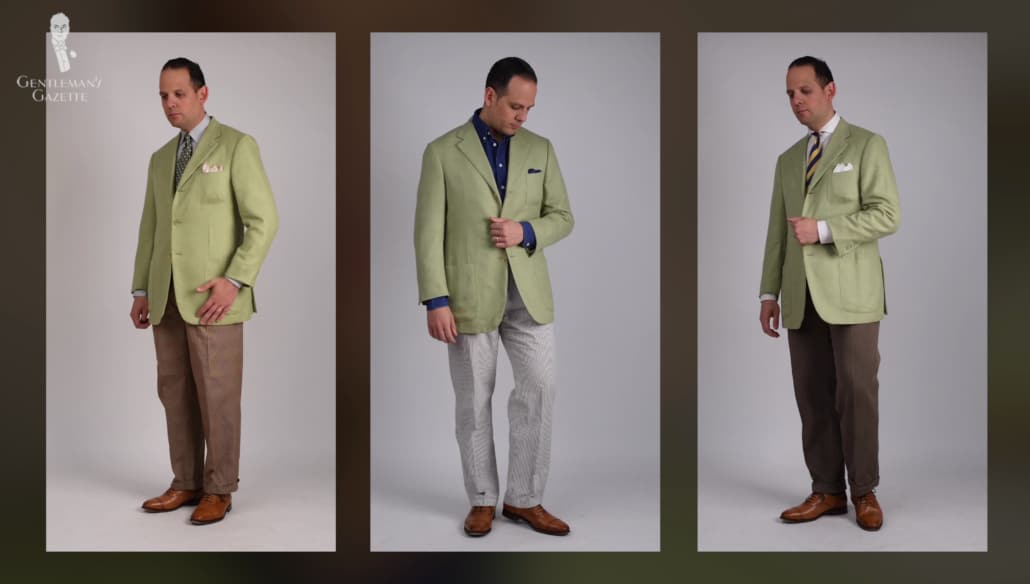
Raphael wearing 3 summer outfit variations
2. Cold Weather
For cold-weather dressing, your priorities are just the opposite–staying warm and often staying dry in the autumn and winter months. Seasonality here is perhaps a little bit more pronounced, and everybody is probably going to do it; things like putting on boots or an overcoat or gloves when it’s cold out.
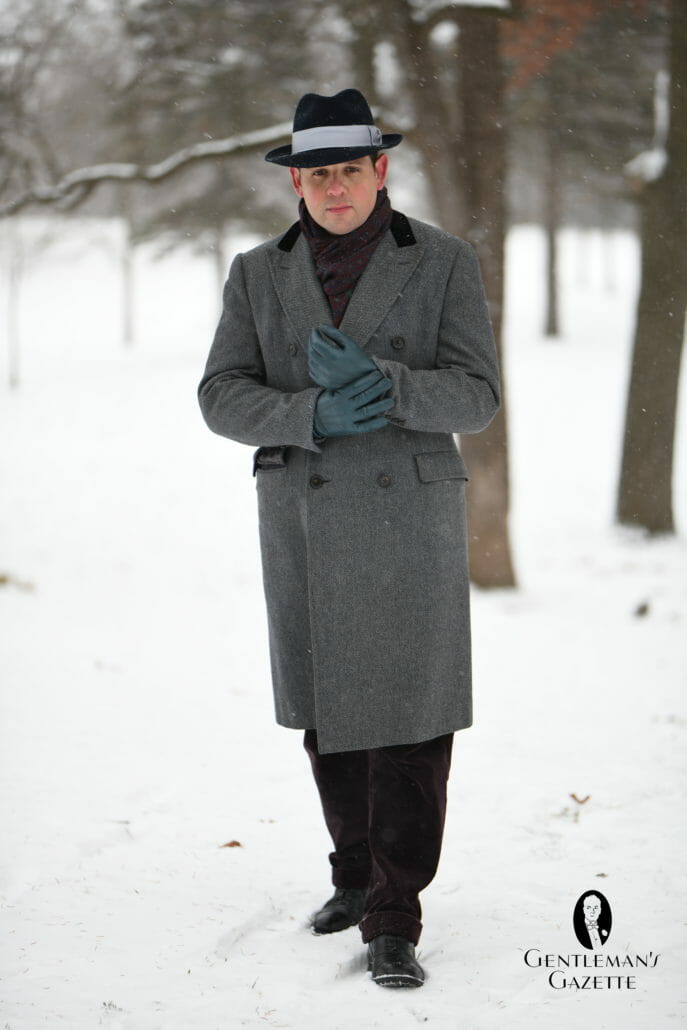
In addition to the gloves, this winter ensemble is further accented by a patterned scarf
However, there are also more subtle changes to incorporate into your wardrobe that the connoisseur of scorpacciata will appreciate. The colder seasons are your time to master the art of layering with things like sweaters and vests. And of course, winter is great for textures as well. Anything that looks particularly woolly is fair game.
There’s no need to rely on the standard all-season printed silk tie or super 110s worsted wool suit. You could try a flannel suit or a tweed jacket and a cashmere tie instead.

Sven Raphael Schneider in windowpane flannel suit with Paisley Madder Silk Tie and Suede gloves
Dressing for Months Within The Seasons
For the true expert, there are also degrees of difference within a particular season. For example, in late May, you might wear a navy blue wool and linen blend sport coat, but on a hot sunny day in August, this would seem dark and uncomfortable, so that you might opt for a cream linen sport coat instead.
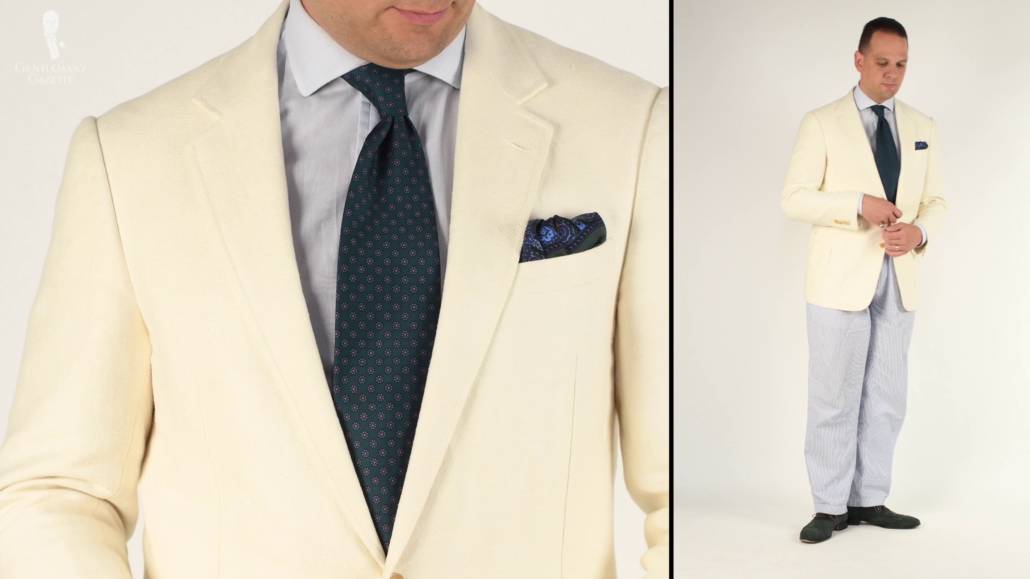
You can opt for an off-white sport coat on a hot, sunny day in August. (Madder Silk Tie and Dark Green Silk Pocket Square from Fort Belvedere)
In May, you could wear a jacket with a lining, but in the dog days of August, you’re probably going to want to go for an unlined jacket that has an open weave.
You could wear a knitted vest under a suit in December, but in February, you could go for a cardigan sweater with sleeves.

An unlined jacket is also an option for the dog days of August.
Conclusion
The true beauty of scorpacciata is not only getting variation between seasons but also within seasons. So, we hope that alongside sprezzatura and spezzato, scorpacciata is a great addition to your menswear lexicon. Ultimately, just like dressing for any given occasion, dressing for the season is about looking correct in your surroundings.
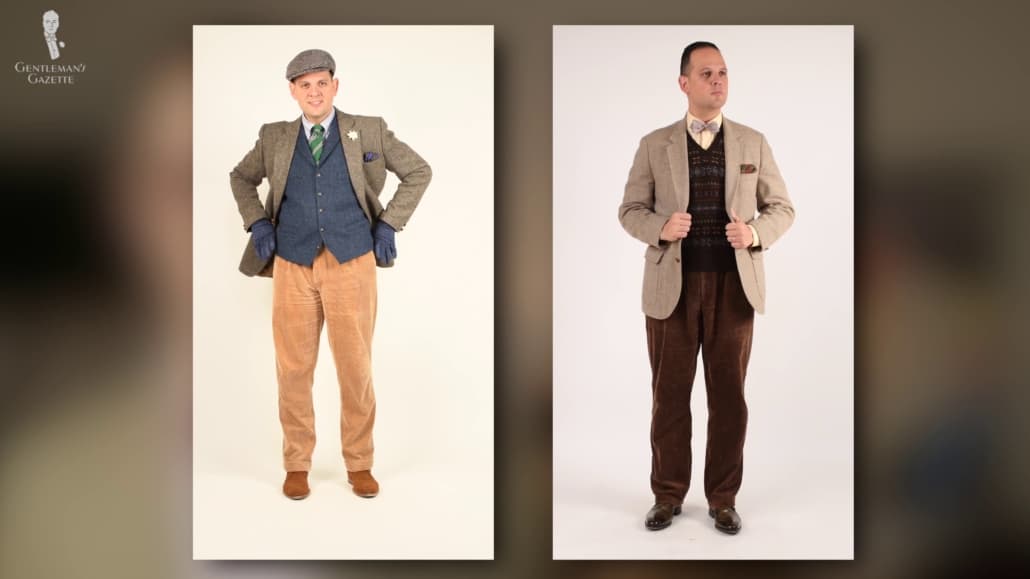
Scorpacciata is about dressing specifically for a season. (Shantung tie, gloves, boutonniere, bow tie, and pocket squares all from Fort Belvedere)
Even though the old fashioned rule of not wearing white after Labor Day doesn’t have to be observed anymore, wearing white linen in the winter or, for that matter, wearing a charcoal three-piece suit in August is something ultimately akin to eating watermelon in January. You can do it, but if you adopt a bit more patience, you can savor the given seasonality of things just a bit more. Whenever someone happens to compliment your flannels in the winter or linen in the summer, remember to spread the word and tell them all about the joys of scorpacciata.
Is seasonal fashion something you enjoy? Would you (or would you not) practice scorpaciatta? Let us know in the comments!
from Gentleman's Gazette https://ift.tt/3csI1ND



0 Comments